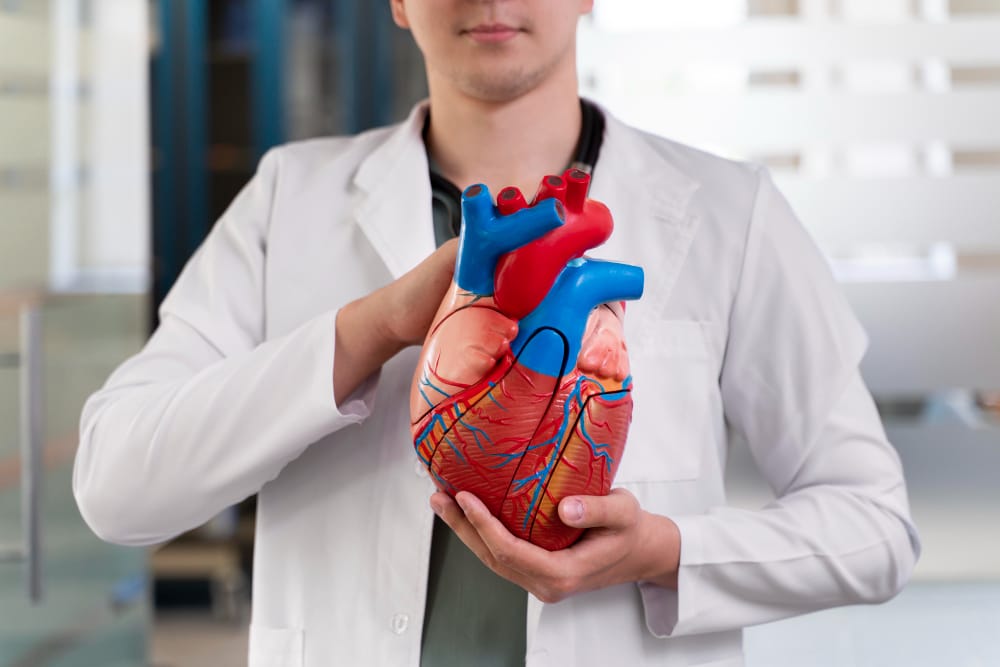How Smoking Damages Your Heart: The Silent Cardiac Killer


Written By: Aman Doda
Last Updated: 29/04/2025


- How your heart and blood vessels function
- The direct impact of nicotine and carbon monoxide on the heart
- How smoking or gutka increases risk for heart attacks and high blood pressure
- What changes happen in your heart when you quit smoking
- The timeline of cardiovascular recovery post-quitting
- A truth-centered message to guide your decision to quit
- One inspiring real-life story to remind you: freedom is possible
- 01: Introduction: The Silent Heart Damage No One Talks About
- 02: The Trap of Someday: Why the “Right Time” Never Comes
- 03: How Smoking and Gutka Disrupt the Cardiovascular System
- 04: Why You Don’t Feel It—Until It’s Too Late
- 05: The Science of Recovery: What Happens After You Quit
- 06: Watch This: How Carbon Monoxide Silently Strains Your Heart
- 07: Real-Life Testimonial: Dr. Rajesh’s Quitting Experience
- 08: FAQs: Smoking and Your Heart Health
- 09: Conclusion: It’s Not About Fear—It’s About Clarity
- 10: Disclaimer
Introduction: The Silent Heart Damage No One Talks About
When most people think of the dangers of smoking, they picture damaged lungs, coughing fits, or breathing problems. But one of the most deadly effects of smoking isn’t in your lungs—it’s in your heart.
Whether it’s cigarettes, gutka, or any form of smokeless tobacco, nicotine silently damages your cardiovascular system. And the scariest part? You often won’t feel a thing… until it’s too late.
Your heart, that small but mighty muscle that beats over 100,000 times a day, is constantly working to keep you alive. But with every puff, with every pinch of gutka, you’re adding invisible pressure on this system.
This blog isn’t here to scare you. It’s here to help you see the truth—with clarity, science, and compassion.
By the end of this article, you’ll not only understand how smoking harms your heart, but you’ll also know exactly what happens inside your body when you quit—and why it’s never too late to start healing.
How the Heart Works: Your Body’s Most Underrated Pump
Your heart is not just an organ—it’s a powerhouse.
Every single day, your heart beats nearly 100,000 times, pumping around 7,000 liters of blood through a network of arteries and veins. Think of it like a pump connected to thousands of pipelines (your blood vessels), delivering oxygen and nutrients to every corner of your body—from your brain and muscles to your skin and organs.
This system works flawlessly only when the pipelines are clear and flexible. But here’s the issue—smoking interferes with this balance long before you feel anything.
When your arteries begin to narrow or harden due to smoking, your heart must push harder to get blood through. Over time, this added pressure wears down the pump itself—your heart—leading to high blood pressure, heart strain, and, eventually, heart disease.
You won’t always notice it immediately. But inside, damage is silently building up.


How Smoking and Gutka Damage the Heart—Step by Step
You already know smoking affects your lungs. But what it does to your heart and blood vessels? That’s even more dangerous—because it’s invisible, silent, and progressive.
Let’s break this down simply.
1. Nicotine: The Vessel Tightener
Nicotine—the addictive chemical in cigarettes and gutka—causes your blood vessels to constrict (tighten). This reduces blood flow and increases pressure.
Your heart has to work harder to do the same job.
Over time:
- Arteries stiffen
- Blood pressure rises
- The heart muscle gets exhausted from overwork
2. Carbon Monoxide: The Oxygen Blocker
This toxic gas replaces oxygen in your blood. So while your heart is pumping, it’s not pumping oxygen—it’s pumping poison.
Less oxygen = more pressure on the heart to compensate.
Every cigarette = a small dose of oxygen deprivation.
3. Gutka: The Silent Mimic
Most people assume gutka is safer than cigarettes. But it’s not.
Gutka contains high levels of nicotine—and when it enters the bloodstream through the mouth’s lining, it mimics the same damage:
- Constricts arteries
- Elevates blood pressure
- Alters heart rhythms
What Happens Over Time?
- Elevated blood pressure becomes chronic
- Arteries clog with plaque
- Blood flow to the heart is restricted
- Risk of heart attack and stroke shoots up
And the scariest part?
You feel normal while all this is happening.
No pain. No warnings. Until one day—fatigue, dizziness, or chest pain tells you something’s very wrong.
📌 Stat to Remember:
According to the ICMR’s 2023 report, a rising number of heart attacks in Indians under 40 is directly linked to tobacco use—both smoked and smokeless.
Source: ICMR-NCDIR, 2023 Report – [Link]


Why Heart Damage from Smoking Often Goes Unnoticed
This is where smoking becomes even more dangerous—it hides in plain sight.
Unlike lung issues that make you cough or struggle to breathe, heart damage rarely shows symptoms early on. Most smokers and gutka users feel absolutely fine… until they don’t.
Here’s why:
Your Heart Works Silently—Even When It’s Struggling
The heart is a remarkably resilient muscle. Even when your blood vessels are tightening, even when oxygen is dropping, even when your blood pressure is rising—it keeps going.
No alarms. No dramatic signs.
Until one day, something cracks.
That’s when people experience:
- Sudden fatigue during normal activities
- Chest tightness or pain
- Dizziness or shortness of breath
- Palpitations or rapid heartbeat
Often by the time these symptoms appear, serious damage has already been done.
Real-Life Truth
Doctors report that many smokers come into the ER for a cardiac event saying, “I didn’t even know something was wrong.” They thought it was just stress, or being tired. But their heart was quietly under pressure for months—or years.
And here’s the scariest part:
In India, heart attacks in people under 40 have become shockingly common. Many of them are regular tobacco users—smoking, vaping, or chewing.


How Quitting Smoking Can Help Your Heart Heal (Timeline of Recovery)
Here’s the good news: your heart wants to heal. And the moment you stop smoking or chewing tobacco, that healing begins—almost instantly.
Even if you’ve been smoking for 10, 20, or 30 years, your body doesn’t give up on you. It starts repairing the damage from the very first day.
Here’s a timeline of what happens after you quit:
Within 20 Minutes
- Heart rate begins to normalize
- Blood pressure starts to drop
After 24 Hours
- Carbon monoxide levels in your blood begin to reduce
- Oxygen can now circulate more freely
2 to 3 Weeks
- Blood circulation improves
- Exercise feels easier
- Your heart starts to work less hard to pump blood
1 Year
- Your risk of heart disease drops by 50%
5 to 15 Years
- Your risk of stroke and heart attack becomes similar to that of someone who never smoked


Real-Life Story: Dr. Rajesh’s Turning Point
Sometimes, the best way to understand the truth is to hear it from someone who’s lived it. Dr. Rajesh—an everyday professional, not from the medical field—once believed that cutting down slowly would be enough. He tried everything, from willpower to nicotine gums. But it never worked.
Let’s Be Honest—Most People Don’t Feel the Damage Until It’s Too Late
Here’s the uncomfortable truth:
Smoking rarely gives you a warning before it causes real harm. Especially when it comes to your heart, the signs are silent, slow, and easy to ignore.
You might feel “normal” right now.
You may even pass routine tests.
But that doesn’t mean your heart is safe.
Why the Damage Feels Invisible:
- The heart is strong—but quiet. It compensates until it can’t anymore.
- You don’t feel high blood pressure building up.
- You don’t feel plaque forming inside your arteries.
- You don’t notice oxygen levels dropping slowly over time.
And by the time you do?
It’s often in an ER or after a health scare.
Emotional Reality Check:
- If your lungs hurt, you’ll feel it while breathing.
- If your stomach is upset, it immediately bothers you.
- But when your heart is under strain… it stays silent—until it breaks.
That’s why this blog, this message, and your awareness matter now—not later.
Watch This – How Carbon Monoxide Is the Silent Killer
Most people think smoking only harms the lungs. But few realize one of the most dangerous substances in cigarette smoke is carbon monoxide—the same poisonous gas found in car exhaust.
And here’s the shocking part:
With every puff, you inhale this invisible gas directly into your bloodstream.
Why It’s So Dangerous:
- Carbon monoxide replaces oxygen in your red blood cells.
- This forces your heart to work harder to deliver less oxygen.
- Over time, it increases the risk of heart attacks, stroke, and fatigue.
Watch This: Understanding the Root Cause of Smoking
Most people think they can quit with discipline alone. But the truth is—if you don’t fix the root cause, the urge always finds its way back.
Real Story, Real Change: Dr. Rajesh’s Honest QSFS Journey
Video Testimonial: Dr. Rajesh’s Experience
He’s not a medical doctor, but like many, he spent years stuck in the cycle of chewing Gutka—trying to quit, relapsing, and trying again.
In this short video, he shares:
- Why he failed using willpower
- How QSFS helped him break the emotional trap
- And what life feels like 18 months nicotine-free
FAQs: Smoking and Heart Health
Smoking introduces harmful chemicals like nicotine and carbon monoxide into the bloodstream. These chemicals constrict blood vessels, raise blood pressure, damage the inner lining of arteries, and reduce oxygen supply—putting your heart under constant strain and increasing the risk of heart attacks and strokes.
Yes. Gutka contains high levels of nicotine which constrict blood vessels and increase heart rate and blood pressure. Over time, this can lead to the same kind of arterial damage and cardiovascular risk as smoking.
Some healing begins as soon as 20 minutes after quitting—your heart rate starts to normalize. Within 24 hours, carbon monoxide levels begin to drop. And within a few weeks, circulation and blood pressure improve. After one year, the risk of heart disease is cut in half.
Yes, and alarmingly so. In India, there’s been a significant rise in heart attacks among people in their 30s and early 40s—many of whom were regular tobacco users. Early smoking leads to early damage.
While marketed as safer, vaping still delivers nicotine, which can raise heart rate and blood pressure. Long-term effects are still being studied, but evidence suggests that vaping may still harm the heart and blood vessels.
Shortness of breath, fatigue after mild exertion, chest tightness, dizziness, or irregular heartbeat—especially if these symptoms come with tobacco use—should never be ignored.
Exercise is great for cardiovascular health, but it cannot fully undo the damage caused by smoking. The best heart protection is quitting smoking entirely—exercise supports the healing process, but quitting is essential.
Regular health check-ups including ECG, echocardiograms, lipid profiles, and blood pressure monitoring can help detect early signs of heart stress or arterial damage caused by smoking.
Quitting smoking reduces inflammation, improves blood vessel function, and allows your body to repair itself over time. While severe damage might not be completely reversible, risk drops significantly with every smoke-free day.
Conclusion: Your Heart Has Been Waiting for You
Smoking doesn’t always scream through symptoms—it whispers damage until it becomes irreversible. While your lungs might show it through cough or breathlessness, your heart quietly bears the brunt until one day, it can’t anymore.
But here’s what you need to remember:
Your heart wants to heal. It’s strong, resilient, and always waiting for you to take that one decision that gives it the chance to recover.
You don’t have to wait for a medical scare to make a change. You don’t need a perfect day or the “right time.” The moment you decide to quit smoking—properly, with the right understanding and support—you’re already on the path to healing.
If you’re ready to take that first step, not out of pressure but with real clarity, we invite you to begin by exploring the truth behind your smoking habit.
Call to Action: Join the Free Masterclass
If you’re ready to stop hiding—and finally quit in a way that feels freeing, not punishing—
Join our FREE Masterclass.
You’ll get clarity, real tools, and guidance on how QSFS can help you quit permanently.
Watch This : Understanding the root casue of smoking
Many smokers struggle to quit because they’re addressing the wrong problem. Smoking isn’t just a habit—it’s tied to deeper emotional and psychological triggers. In this video, I explain the root cause of smoking and how you can break free by understanding what truly drives the behavior.
Ready to take back your time and your life? Join our FREE Masterclass to discover the proven strategies for quitting smoking for good.
Looking for ongoing support and encouragement? Join our Private Facebook Group, where you’ll find tips, inspiration, and a community of people just like you on the same journey.
Disclaimer
The information in this blog is intended for educational purposes only and does not substitute professional medical advice or diagnosis. While this content is curated with insights from health and wellness coaching, readers should consult a qualified healthcare provider for any medical concerns or personalized guidance.
Individual results may vary based on a variety of factors including health history, duration of smoking, and quitting method. Testimonials and stories shared are real experiences but should not be seen as typical outcomes for every person. Quitting smoking is a personal journey that often requires emotional clarity, structured support, and the right system—such as QSFS.
Share via:
